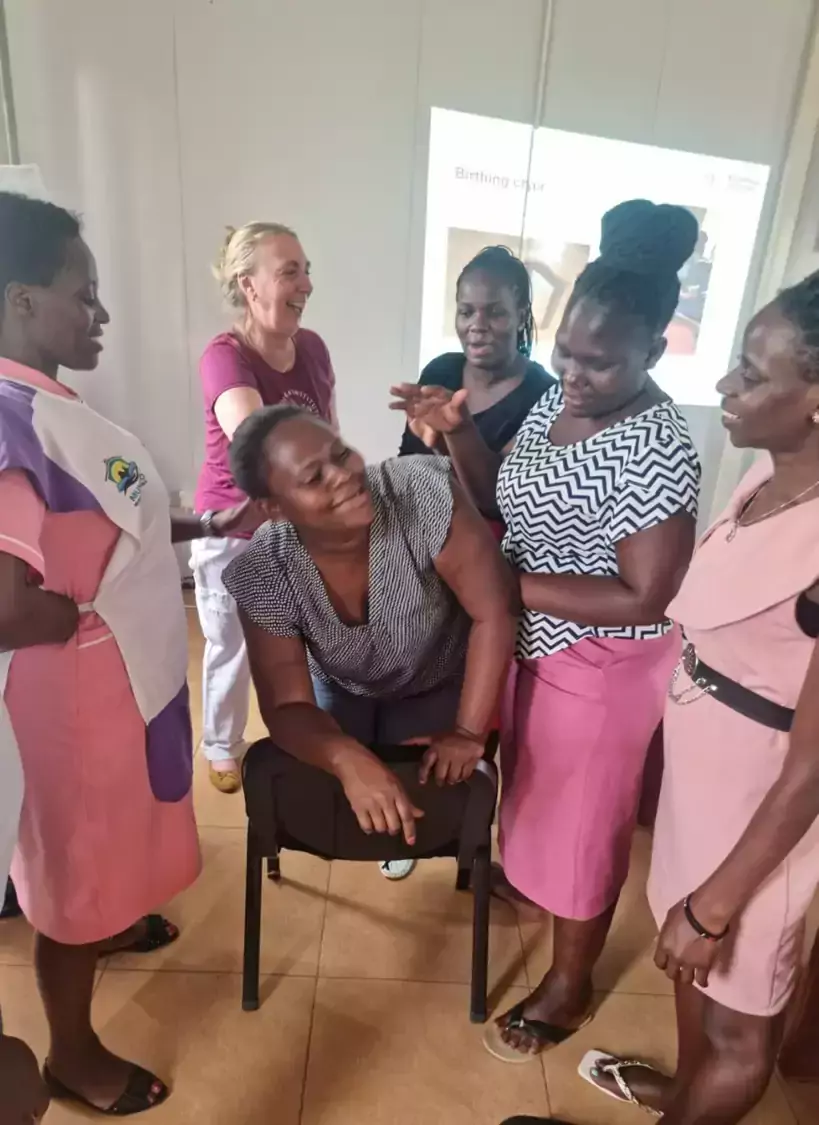Impact case: MIMA-model for better outcomes in childbirth
Giving birth is a natural process in a woman’s life, but at the same time it is a dramatic event that can cause injury to the mother and risk to the child. Safe procedures and hospital routines built on evidence-based methods can minimise the risks for both mothers and children, all over the world. The MIMA model has proven to be such a method.
Most women who give birth for the first time experience some form of perineal trauma - muscles or mucous membranes in the perineal area are torn or ruptured.
These tears can be painful and increase the risk for infections. They can also cause problems with breastfeeding and put a mental strain on the mother in the postpartum period.
Helena Lindgren, associate professor in reproductive health at Karolinska Institutet, found several years ago that women giving birth at home suffered from less perineal injuries than those who came to the hospital. The reason seemed to be, Lindgren concluded, that in a planned home delivery, the mother herself would take on a larger role in the process. This included the mother’s own choice of birthing position and a freedom to decide when to push during labour.
The hypothesis was tested in two Swedish hospitals and the results showed that perineal tears decreased with thirty percent among first-time mothers when they were allowed spontaneous pushing and a birthing position that gives flexibility in the joints around the pelvis. These positions include standing up, kneeling, crouching or to sit on a stool during labour – as opposed to a supine position.
"We combined the flexible sacrum positions with spontaneous pushing and a slow birth of the baby’s head and shoulders into a new model of care," says Dr Lindgren.
MIMA-model
The name for the model became MIMA - Midwives Management of the second stage of labour.

A similar intervention study in the Amhara province of Ethiopia showed that the model works equally well in a low-income country, with fewer women suffering from post-partum injuries.
"This is important, because it shows women in poorer areas that they can come to a hospital and have a baby in a safe way, instead of staying at home. That potentially saves lives," says Helena Lindgren.
Since 2020 the WHO recommends birthing positions that gives the mother flexibility in the pelvic region, and the work of the Lindgren group at Karolinska form part of the basis for that recommendation.
They have also used the results from the intervention studies to train all doctors and midwives at the maternity wards of the Stockholm healthcare region, and thus lowered the number of injuries at the hospitals.
"It is important to look for solutions to real problems for both patients and healthcare staff," says Helena Lindgren. "We have been able to work directly with midwives and doctors both in Sweden and low-income countries, and to train key persons that now act as ambassadors for the MIMA model and pass along the knowledge."
